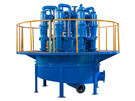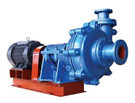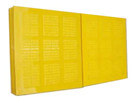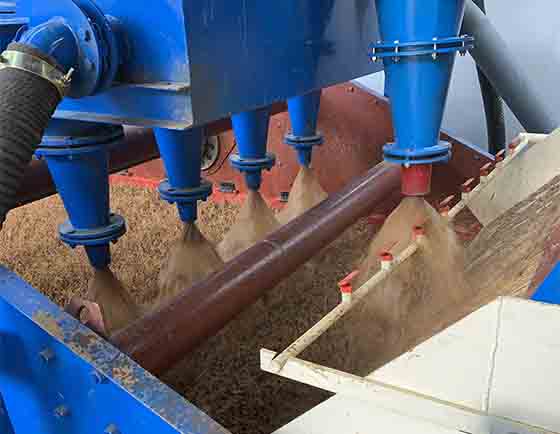Hot Product

- Hydrocyclone Group
Hydrocyclone group is widely used in coal preparation plant...

- Slurry Pump
Slurry pump is mainly used in mining, power plant, dredging, metallurgy...

- Polyurethane Dewatering Screen Panel
In addition to the performance of...
The Effect Of Hydrocyclone Structural Parameters On Separation Efficiency
Date: 2024-12-12 From: Longding Author: admin
Improving the classification efficiency of the hydrocyclone and improving the classification effect of high-concentration fine particles have always been important topics in the field of hydrocyclone research. The structural parameters of the cyclone are the main factors affecting its separation particle size and classification efficiency. This paper selects the three factors that have the most significant influence on column diameter, cone angle, and overflow pipe insertion depth for research.

Generally, increasing the cross-sectional size of the feed pipe can effectively reduce the total pressure loss of the cyclone, and at the same time can improve the production capacity of the cyclone and increase the separation particle size within a small range. The overflow pipe diameter is an important parameter that affects the overall separation performance of the cyclone. Reducing the overflow pipe diameter within the permitted range will lead to reduced separation accuracy and smaller separation particle size. When the overflow pipe diameter is smaller than the radius of the maximum tangential velocity of the flow field in the cyclone, the separation particle size will increase instead. For the insertion depth of the overflow pipe, its lower end surface should be higher than the column-cone interface, otherwise it will aggravate the turbulence of the flow field. It should not be higher than the horizontal plane of the lower edge of the feed pipe, so as not to lose its due function. Generally, increasing the underflow pipe diameter is beneficial to the separation and classification of fine particles, but too large a diameter will lead to a decrease in underflow concentration, an increase in fine particle content, and a decrease in classification efficiency. When it approaches and exceeds the overflow pipe diameter, the working process of the cyclone will be disrupted. The ratio of the underflow pipe diameter to the overflow pipe diameter should generally be in the range of 0.15~1.
The diameter of the cyclone column section mainly affects the production capacity of the cyclone and the particle size of solid phase separation. Generally, as the diameter of the cyclone increases, its production capacity and separation particle size will increase, and the possibility of clogging will decrease. When separating very fine solid particles, a small diameter hydrocyclone (group) should be used. When the same separation requirements are met, larger diameters should be given priority. The angle of the cone section is one of the main structural parameters of the cyclone and has a significant impact on the classification performance. The cone angle of a hydrocyclone is generally 10~20°, and the larger the column diameter, the larger the cone angle. The cone angle of a cyclone with a diameter of 75 mm is generally selected as 20°, and for micro cyclones, the cone angle can even be 1.5°. As the cone angle increases, the separation particle size of the cyclone becomes larger and the separation accuracy improves, but the classification efficiency shows a downward trend.
Previous:What Are Rubber Springs Used For?
Next:The Effect Of Hydrocyclone Operating Parameters On Separation Efficiency
Leave a Message
Here you can submit any questions and we will get back to you as soon as possible. We will not disclose the information you submit to anyone, please rest assured.


Inquiry